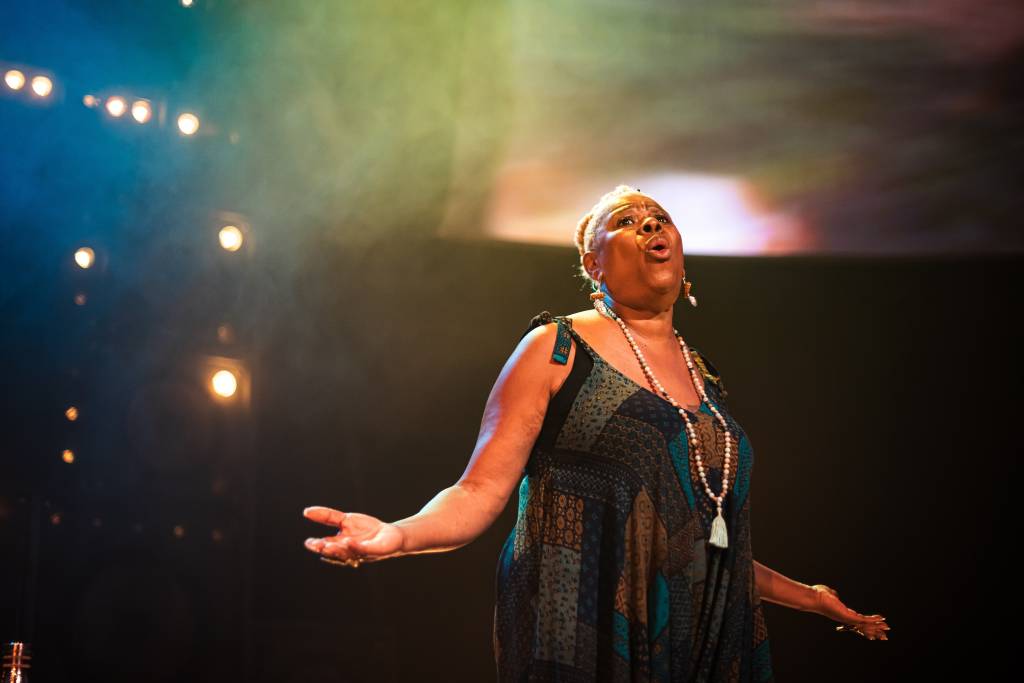by Jim Keaveney
Make no doubt about it; the Broadway transfer of Lerner and Loewe’s classic musical My Fair Lady, directed by Bartlett Sher, is an unashamed crowd-pleasing spectacle – and, in the London Colisuem’s decadent space it is a glorious spectacle.
Building on her success in the Almeida’s Spring Awakening, Amara Okereke cements her rising star status with a sensational turn as Eliza Doolittle, the Covent Garden flower-seller, who, under the wing of phonetician Professor Henry Higgins (Harry Hadden-Paton), seeks to reinvent herself as a Lady. With a sublime voice that is strong one moment and delicate the next, she steals the show. Okereke’s casting makes her the first black woman to play the role – it’s a shame it has taken this long.
 |
| Harry Hadden-Paton, Amara Okereke, and Malcolm Sinclair. Photo: Marc Brenner |
Hadden-Paton, who transfers along with the production from Broadway, is extremely entertaining as a facially-expressive, foppish version of Higgins. While he does not quite communicate an attraction between Higgins and Eliza, that almost feels like the point, given the one-sided nature of the courtship. Meanwhile, it is a delight to see Vanessa Redgrave on stage as Mrs. Higgins, and Malcolm Sinclair impresses as a comic Colonel Pickering. Sharif Afifi’s performance of On The Street Where You Live is a surprise highlight.
It would be difficult not to mention Michael Yeargan’s sets, loving recreations of an idealised West End or Broadway production, with large board-style backings that are lifted in and out of place and a detailed, rotating, reconstruction of the interior of an upper-middle-class London townhouse.
 |
| Vanessa Redgrave and Amara Okereke. Photo: Marc Brenner |
All of this is not to say the show is without its faults; the subplot featuring Eliza’s father Alfred (the comedian Stephen K. Amos who proves his comic timing rather than his vocal prowess) feels like a distraction in an already lengthy show.
But, more importantly, it is hard to watch My Fair Lady without feeling unease at some of its more sexist and classist approaches to women and the lower and working classes. It’s worth saying that is possible to mount a revival of a classic musical of this period with some recognition of the problematic traits they have carried from the era of their inception to the modern-day.
 |
| The company of My Fair Lady. Photo: Marc Brenner |
For the most part, Sher unwisely resists the temptation to do so. It is perhaps telling that the audience has a rather muted reaction to A Hymn to Him, Higgins’s musical questioning of why women couldn’t be more like men. That said, there is redemption in Sher’s slight adjustment to the conclusion – an ending that George Bernard Shaw, who wrote the play Pygmalion on which the musical is based, would be happy with.
But there’s more than just Shaw who will be happy – after all, this is a crowd-pleasing spectacle, and a glorious spectacle at that.
Jim Keaveney is the lead critic at The Understudy. He tweets occasionally from @understudyjim















